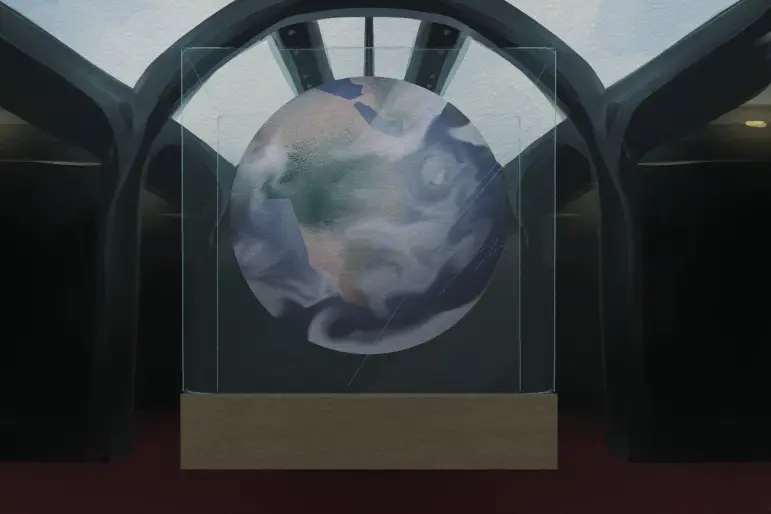Museums are a noble institution, perhaps the noblest in modern civilization. Their role is to maintain and exhibit culture for the public. They depict ideas and worlds lost for centuries. They uplift and represent these ideas in a neutral, informative manner. The importance of museums often goes unappreciated by the general public. In most galleries, you will find bored teenagers and sluggish adults, tourists visiting out of necessity rather than genuine interest. The most appreciative demographic would be the elderly, who praise the slow pace of it all. However, the general lack of interest is indicative of a more significant issue.
As a lover of museums, I admit the institution is dated and must evolve. Many of the most notable institutions boast artifacts that have been pillaged rather than collected. They restrict the subjective nature of art into a confined, objective setting. They control the narrative and that narrative is dated. As society evolves, so must art and the way it is presented. I wanted to counteract my passion and explore the possibilities of art beyond museums. How can art thrive without the exhibit that holds it?
Before exploring alternatives, one must uncover the flaws in the original system. The primary issue with museums is their troubling history. The collections of major institutions are built from centuries of conquest and imperialism. Many objects were stolen from their homes and have yet to be returned. This reality has led to discourse regarding whether these objects should be returned to their ancestral lands or continuously held for “safekeeping.” For the longstanding institution the British Museum, most of its collection remains very much not British. Museums are aware of this issue, with the Ethnologisches in Berlin planning to return a portion of its African art to its home in Nigeria. Ultimately, the troubled history of museums separates nations and groups from their past, a division quite difficult to repair.
The imperialist history of museums underscores their status as imperfect carriers. They portray inauthentic narratives. Sacred objects in cultures are on display like the latest designer purse. Museums appreciate but also appropriate. Thus, the main goal of alternative presentations of art should counteract these limitations. New spaces and practices should further uplift the art and allow a more intimate relationship between the object and the viewer while allowing an authentic narrative to emerge.
One possible alternative is the practice of lending out art to individuals rather than placing them in exhibits. My college, Oberlin, boasts such a program. The school’s Allen Museum allows students to rent out work from a curated collection for $5. The piece can be incredibly prestigious: a Picasso or some other avant-garde piece. This work is displayed in a dorm room for a semester rather than a crowded exhibit hall.
The presence of great art in a home setting is nothing new, with many purchases being made in auction-type settings. However, the acquisition of such art is a privilege usually restricted to the wealthy. Auctions are prestigious events that call for hefty price tags. The lending system at Oberlin is much more inclusive, allowing rentals for a low price. Of course, many may criticize this practice, claiming it reduces art to decoration rather than allowing the student to appreciate the piece in a museum setting, where they learn about its history.
However, the implementation of an art-lending system will bridge the gap between the viewer and the object. As established, most visitors to museums come out of necessity rather than out of interest in the collections. There is a detachment, with exhibit labels telling viewers exactly how to feel about a given image. It is purely exposition, foregoing raw emotion. The sheer crowds in museums view most art in a passing moment. People wander through halls and appreciate the aesthetic and history, but little else.
By having a single piece of art in a residential setting for an entire semester, individuals can know a piece like their friend. They will memorize all its finer details and appreciate the full extent of its beauty, one not confined to a quick glance or label. By the end of the relationship, the person will be encouraged to seek out more work and more connections. If other academic institutions adopt a lending program like Oberlin’s, youth art appreciation will only grow.
A second alternative to traditional museums is public art, meaning art that lies within a specific community and is based on a given community’s spirit. Typical examples may include murals crafted on certain blocks, bizarre sculptures put up by unknown artists or maybe just the local graffiti. It is public art because it is simply art for the public. A societal emphasis on this medium will make art more accessible, removing the expensive admission ticket so anyone can enjoy a piece, no matter the background. It will make art appreciation less of an elitist activity.
A more complex argument for public art lies in its ability to transform communities and meet the current moment. You will hear many accounts of driven artists revitalizing downtrodden neighborhoods. These murals are urgent, reflecting the modern values of their community. They uplift their surroundings, bringing people together over a specific cause. It can be a tribute to a fallen celebrity or a local hero. This passion is rarely found in a museum setting, where curated art exists for the sake of it. They are great pieces, yet the surrounding environment fails to enhance them. They feel plucked out of context to teach a lesson, never building upon the surrounding space to elicit strong emotion or activism. Art should be more than just an object on a wall — it should reflect movements and values, which public art does.
Ultimately, art has numerous applications beyond museums and beyond this discussion. Art is subjective and so are its presentations. We can foster intimate relationships beyond museums by lending preexisting art pieces to individuals. We can allow art to become a vital community centerpiece by centering public art that adapts to the places in which it resides. With all this potential, should museums simply die off? Have we evolved past the need for these culturally appropriative, imperialist institutions? I love museums, and thus it will be difficult for me to let them go. But like any healthy relationship, a person should be able to criticize the other and provide them the opportunity to change.
Museums could evolve with the times by adapting their practices and uplifting new presentations of art. For example, leading institutions could spearhead innovative lending programs, allowing intimate relationships at a low cost. They could also uplift public art by placing projects in specific communities. They could use their privilege for the advancement of the art world, platforming the future. Art history is like a relay, with movements over the centuries passing their influences like a baton to the next. Perhaps, museums can function the same way, leaving their darkest influences in the dust and pushing the best parts forward.












